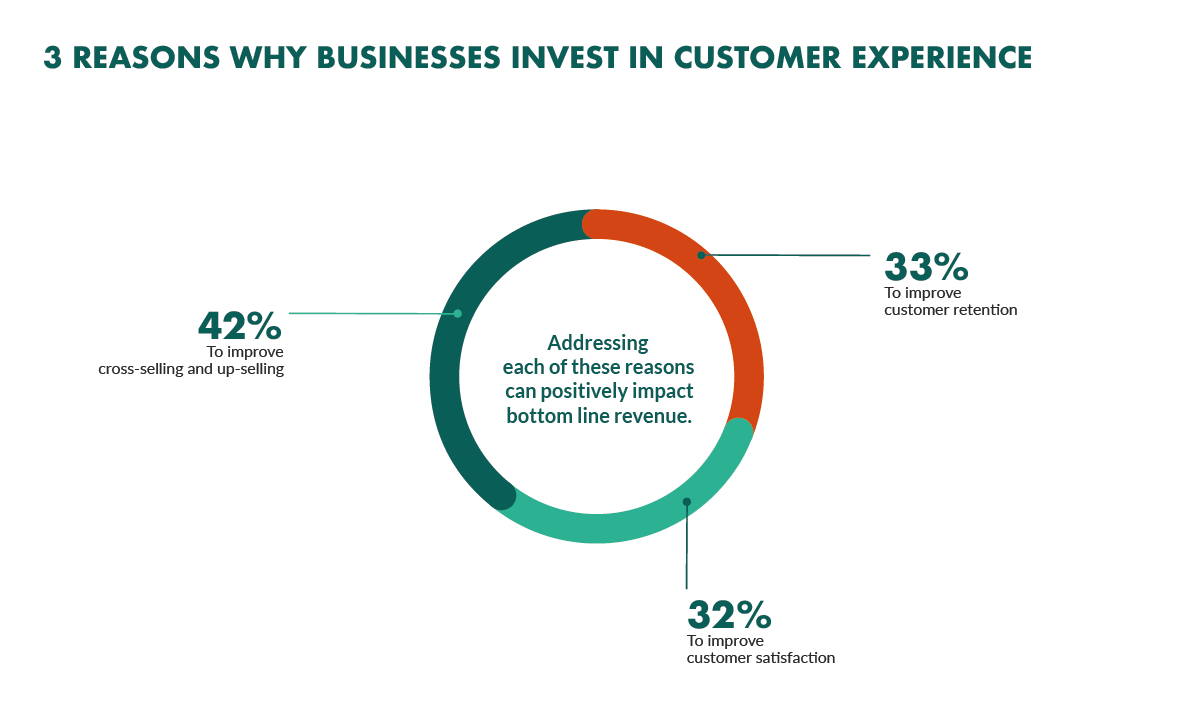Opening a delicatessen can be a tasty business opportunity. The deli food service industry in the United States is expected to grow at a compound annual rate of 7.0% from 2022-2031. With the right planning and passion for food, there is room in the market to carve out your niche.

Starting a successful delicatessen takes know-how, grit, and guts. But for food lovers, the rewards of owning your neighborhood deli can offer fulfillment beyond the bottom line. Customers will come to rely on you for a quality meal and rare food finds in a welcoming space to linger.
This guide will walk you through how to open a deli. Topics include market research to develop a solid business plan, competitive analysis, opening a business bank account to separate finances, sourcing equipment for your deli restaurant, and more.
1. Conduct Deli Market Research
Market research is essential to understanding your target customers and developing a deli business plan. It offers insight into the food business industry, specifically Italian deli statistics, information on the local health department, trends in deli products, and key players in the industry.

Some details you’ll learn through deli industry market research include:
- While the moderately sized deli market is mature, shifting consumer preferences and demographics present opportunities.
- The population is aging, household income is rising, and more people live in cities.
- The market remains highly fragmented, indicating room for new entrants.
- Independent delis made up over 93% of locations, though national chains controlled 35% of revenue share.
- Building brand awareness as a local, specialty deli can be a pathway to prosperity.
- Not all deli formats have fared equally.
- Customer preferences are shifting away from processed, pre-packaged foods with long lists of unpronounceable ingredients.
- Population-dense cities offer the strongest markets for aspiring deli owners.
- The New York metropolitan area leads with over $5 billion in annual sales.
- Office workers, students, tourists, and busy families will pay a premium for flavorful, convenient meals. Locating near high foot traffic zones is key.
- Controlling inventory, waste, labor, and real estate overheads is paramount.
- Startup costs typically range from $80,000 to $250,000. Strong unit economics can support expansion once the concept is proven.
In summary, opportunities abound for ambitiously run delis meeting the needs of today’s consumers. With strategic location selection and efficient operations, new entrants can carve out a tasty slice of this mature but growing market.
2. Analyze the Competition
Doing diligence on competitive forces is fundamental when scoping a new prepared food concept. This analysis should evaluate both local brick-and-mortar options as well as assess each brand’s online presence.

Some ways to get to know deli businesses in the area as a successful deli include:
- Begin by identifying all delis within a several-mile radius of your prospective location.
- Visit incognito, sampling menu items while discreetly observing operations.
- Note prices, ingredient sourcing, and anything that captures the uniqueness of that deli’s offering. Independent operations will likely be your direct competition for customers.
- Larger gourmet deli chains have an online presence that reveals crucial information.
- Check their website and social platforms for branding, messaging, and product photos.
- Follow their blogs and PR newsfeeds to understand growth plans.
- Monitoring moves by these industry leaders keeps you abreast of prevailing trends.
- Independent delis today also leverage the web and social sites to engage customers.
- Search for each nearby deli online to analyze services, promotions, customer reviews, and search visibility.
- Be sure to create accounts to experience their user journey firsthand. This online reconnaissance continually informs your competitive strategy.
By benchmarking against successful peers, you can incorporate strengths while positioning your deli concept apart from any direct competitors. If everyone is serving Boar’s Head, source premium sustainable meats. If late hours are lacking in the area, cater to the evening rush.
3. Costs to Start a Deli Business
Getting a deli business off the ground requires significant upfront capital and precision financial planning. From securing a viable space to outfitting the commercial kitchen, expenses add up quickly. Expect to invest between $80,000 to $250,000 to open the doors.
Start-Up Costs
- Plan for a minimum 1,000 sq ft shop in a high foot traffic area like a bustling downtown or office park. Triple net leases run $15-$40 per sq ft monthly, plus commissions.
- Purchasing a property can top $300,000. Buildout costs for flooring, lighting, counters, and grease traps add $20,000-$50,000 depending on condition.
- Outfitting the commercial kitchen is a major line item. Top-quality refrigeration, ovens, slicers, and dishwashers provide long-term value.
- Purchase commercial-grade equipment where possible, allocating around $30,000. Small wares like utensils, pots, and pans will require another $5,000 initially.
- Stock the cases and shelves with at least 15 days’ supply of meats, cheeses, produce, and dry goods. With an average monthly COGS of around $15,000, be prepared to spend $5,000+ on opening inventory.
- Registering the business entity plus acquiring state and local health permits, food handler certifications, and sales tax licenses carry fees of around $2,000.
- Hire at least one chef and multiple sandwich makers, cashiers, and phone attendants. Payroll for 3 months including taxes will run over $60,000 for 8-10 FTE employees.
- General liability, workers’ compensation, and food spoilage policies cost approximately $300 monthly, or $900 to protect the first months of business.
- A reserve fund of $10,000+ handles any unforeseen opening delays or short-term losses as customers ramp up.
Ongoing Costs
- Payroll: Employ a full-time manager, and full and part-time team members to cover two shifts daily. Payroll at $20/hr plus 30% benefits and taxes will exceed $100,000 annually.
- Ingredients: Food costs are challenging to control given frequent supplier price increases. Budget 30-35% of revenue for high-quality meats, cheeses and produce. Aim for $15,000+ in average monthly COGS.
- Occupancy: Rent and utilities fluctuate but expect to allocate 10% of sales. Triple net leases averaging $2,000 monthly plus water, electric, and garbage bills reach $30,000+ per year.
- Supplies: From paper goods to cleaning chemicals, operating supplies approach 5% of revenue. Budget $500 monthly for napkins, to-go containers, and other consumables.
In summary, launching and operating a profitable delicatessen demands fierce attention to pricing power and margins from day one. Keeping expenses like payroll and inventory stocking rightsized for current sales volume is equally vital. With realistic budgets set, savvy deli owners can thrive on community patronage.
4. Form a Legal Business Entity
When establishing a delicatessen, one of the first legal steps is selecting the business structure. This decision holds major implications for liability, taxes, and ease of operations. Weighing the pros and cons of each format below informs savvy deli entrepreneurs.
Sole Proprietorship
Over half of U.S. businesses are structured as sole proprietors for tax simplicity and full control. However, this exposes personal assets to any deli debts or lawsuits. Consider instead:
Limited Liability Company (LLC)
This increasingly popular hybrid structure limits legal liability and allows profits/losses to pass to the owner’s tax return. Unlike corporations no annual meetings are required, providing flexibility for a small operation to make decisions nimbly.
Forming an LLC also builds credibility with banks, landlords, and vendors. Being viewed as an established business vs. a sole operator opens more favorable credit and lease terms.
Partnership
When two or more deli co-owners combine resources in a partnership, liability protection increases slightly but personal assets remain vulnerable. Decisions requiring majority approval introduce potential disputes. Inherently less structured than a corporation, partnerships best suit very small, hands-on ventures where partners share residence and finances.
C Corporation
This traditional framework offers the strongest liability shielding for deli owners but ensures double taxation. Income is taxed at the corporate rate and then taxed again as personal income when distributed to shareholders. Significant record-keeping and annual compliance filings also burden small restaurants disproportionately. Thus corporations become unwieldy for typical Main Street delis.
5. Register Your Business For Taxes
Even if operating as a sole proprietor, every U.S. business needs to obtain an Employer Identification Number (EIN) from the IRS for tax and banking purposes. Thankfully securing this unique identifier takes just minutes online.
Functioning similarly to a social security number, the EIN distinguishes your delicatessen as a taxable entity. While legally optional for sole proprietors using only their SSN, there are two key benefits to procuring an EIN:
- Applying for business bank accounts and credit cards requires an EIN to verify registered business status.
- If you intend to take on deli employees within the first year, having the EIN already lined up streamlines the onboarding process.
Registering your EIN with the IRS is free and can be initiated fully online via the streamlined application form.
You’ll need only your personal identifying details, business address, and structure establishment date to complete the 5-minute form. Sole proprietors can obtain instant EIN confirmation; other entities may wait up to 2 weeks for email verification from the IRS.
With your shiny new EIN in hand, finish legitimizing your business by registering with your Secretary of State for state sales tax collection rights and permits. Here you will elect your tax structure – sole proprietor, single member LLC, partnership, or corporation.
State filing fees range from $50 to $500 depending on your entity choice. And congratulations, you now wield two key tools to unlock serious deli success – your EIN and state sales tax authority!
6. Setup Your Accounting
With narrow profit margins in the restaurant industry, every dollar counts toward your delicatessen’s success. Meticulous accounting and financial management underpin this profitability from day one. Invest in bookkeeping software and an accountant from the start to optimize cash flow and minimize tax liability.
Open a Business Bank Account
Begin by separating all personal and business finances into distinct accounts. Open a dedicated checking account solely for deli transactions once you obtain an EIN. Business revenue inflows and payroll, vendor, or inventory outflows should flow through this portal.
Accounting Software
Next leverage user-friendly accounting software like QuickBooks to seamlessly track all cashflow events. The magic lies in syncing revenue and expenditures from your deli checking account and credit cards automatically into QuickBooks ledger reports. Custom categorization tags every menu item’s profit margin down to the sandwich while providing real-time financial snapshots. QuickBooks plans start around $20 monthly.
Hire an Accountant
Outsourcing tax preparedness and payroll filings to a qualified accountant saves huge headaches. A full-service bookkeeper charging around $100 monthly can reconcile bank statements, code transactions and handle quarterly sales tax payments. Before-tax season, your CPA will optimize liability with deductions and income categorization aligned to all IRS regulations.
7. Obtain Licenses and Permits
While eager entrepreneurs may rush into remodeling their perfect corner deli location, the permitting processes regrettably slow things down. Find federal license information through the U.S. Small Business Administration. The SBA also offers a local search tool for state and city requirements.
Regulated at the county or municipal level, this permit ensures your delicatessen meets stringent food safety codes. Requirements range from proper refrigeration temperatures to correct chemical storage. Initial inspections focus on sanitation of facilities, equipment, and processes while operating licenses renew annually after re-inspection.
Similarly, your city or county Board of Health inspects for compliance around safe ingredients, food handler hygiene, waste disposal procedures, and pest control. Renewals are required and a stint on probation occurs for non-compliance until violations are remedied. One food-borne illness can permanently close unregulated restaurants.
While excise tax collection protocols vary widely between states, most mandate that any business conducting retail sales of tangible goods obtains a seller’s permit. This requires both state sales tax registration and commitments to accurately collect and remit this tax revenue on the state’s behalf.
Nearly all health departments require that at least one staff member at restaurants be certified in safe food handling courses like ServSafe. As the owner, invest several hours in this $100-$200 two-year certification for the safety of patrons and the protection of your deli’s reputation. Hire only fully certified personnel for all chef and kitchen prep roles.
From grease-laden kitchen vents to propane cylinders for that coveted panini press, coordinating an inspection with your local fire marshal protects against disasters. General permits related to legal occupancy loads, fire extinguishers and emergency exit accessibility may apply as well.
8. Get Business Insurance
Even small, community-rooted businesses face unpredictable perils from accidents to natural disasters. The right insurance coverage is essential to hedge against scenarios that could shutter your livelihood. Consider how these events could financially cripple an uninsured delicatessen:
- A kitchen grease fire forces your deli closed for extensive repairs just as the lunch rush revenue hits peak summer levels.
- A slip and fall injury lawsuit from a customer exceeds $100,000 in legal judgments and medical bills.
- A refrigerator fails overnight spoiling $3,000+ in fresh inventory and requiring an emergency replacement.
The robust protections provided by insurance allow you to focus on recipes and great service rather than existential worries. Core policies to secure include:
General Liability Insurance Protecting customer safety is paramount. General liability shelters your delicatessen from minor mishaps to serious lawsuits up to $1 million and beyond through customized premiums scaled to your needs. Expect about $50 monthly for $1 million in coverage.
This policy ensures the physical restaurant and contents against damage, theft, and loss of income from shutdowns. With plans available at approximately $100 monthly, securing the bricks and mortar itself is essential.
Specialized offerings like food spoilage insurance, flood damage inclusion, or worker injury compensation help hedge for industry-specific risks as well. Discuss extensively with a qualified agent to configure complete, affordable coverage.
9. Create an Office Space
While the bustling daily operations of a delicatessen remain front-and-center on site, carving out administrative space lends major efficiency. An office suits key business functions from bookkeeping to marketing plus private conversations with staff or vendors. Consider these potential setups and costs.
Home Office
Working from a spare bedroom or basement keeps costs nil while allowing focus. Simple furnishings like a desk, computer, and filing cabinet suffice with minimal expenses under $1,000. However, blurred work-life separation and distractions hamper productivity. Still, a short-term solution when launching on a shoestring budget.
Coworking Space
Facilities like WeWork provide stylish, professional environments for small business owners seeking flexibility. Open desk memberships offer a mailing address, printing, conference rooms, and networking events. Hot desk month-to-month access runs about $300. Offices for 2-3 people with storage lockers lease from $800-$2,000 monthly. Ideal for collaborative ventures.
Standalone Commercial Office
Eventually, most restaurants outgrow interim spaces, justifying a private lease. Expect 500+ square foot units in older low-rise buildings from $1,000 monthly. Clauses, like capped operating expense pass-throughs and tenant improvement allowances, help manage costs long term. The right office becomes a recruiting asset and hub for the leadership team.
10. Source Your Equipment
Bringing a concept to life in your gleaming new delicatessen requires more than passion. The array of essential commercial equipment represents a major startup expense. From ranges and refrigerators to slicers and dishwashers, purchases must align with concept and budget.
Buying New
While premium brands deliver durability, expect sticker shock exceeding $30,000+. Combine new purchases strategically with used appliances in great condition to optimize quality within financial realities. Utilize the many equipment dealers online at sites like Webstaurant Store or KaTom.
Buying Used
Gently used equipment offers major savings, allowing small deli owners to acquire commercial-grade workhorses. Vet options thoroughly check functionality, sanitation, and maintenance records before purchasing. Budget 50%+ discounts off new prices. Great finds shine on Craigslist and Facebook Marketplace for sellers nearby. eBay and auction sites boast inventory but may lack localized support.
Leasing
Equipment leases secure use without major capital investment, although total costs inflate over longer terms. This strategy works well for new concepts with uncertainty around perfecting menus and service models before major asset buys. Expect roughly $150 monthly per large asset leased.
Renting
When expansion opportunities or seasonal demand spikes arise, renting extras bridges short-term capacity gaps cost-effectively. For example, adding a specialty sandwich press for a two-month lobster roll promotion. Rental fees range from 10-25% of the purchase price depending on duration.
11. Establish Your Brand Assets
Beyond tantalizing recipes, cultivating community goodwill drives neighborhood delis to stand the test of time. Committing to consistent branding builds recognition and trust in your shop’s quality and hospitality.
Get a Business Phone Number
Anchor your identity with a memorable business phone line using providers like RingCentral. Call management features like voicemail-to-text make you reachable to book large catering orders or address customer questions faster.
Design a Logo
Next, logo designs encapsulate your style and ethos in an iconic graphic. Options range from free DIY creators like Looka to hiring a professional graphic designer. Simple yet distinctive marks quickly identify your deli on merchandise and signage.
Print Business Cards
Print promotional essentials like flyers, business cards, and window decals using online printing from Vistaprint. Watch expenses yet present crisply professional collateral as you market the shop. Eco-friendly options are available too.
Get a Domain Name
Buy your custom domain name for 2 years or longer through domain registrars like Namecheap. Combining your deli name with keywords like “catering” or “catering business” or your locale helps search visibility.
Design a Website
Your website anchors online brand presence. User-friendly website builders like Wix make professional, mobile-ready sites approachable for under $20 monthly. Or hire an expert web developer from freelance networks such as Fiverr to construct a custom site for $500.
12. Join Associations and Groups
While competition surely exists in the restaurant industry, an even stronger spirit of community and willingness to share hard-won knowledge pervades. Local associations, meetup events, and online groups provide invaluable connections for new deli owners to learn the ropes.
Local Associations
In cities across America, state-level restaurant associations like the Florida Restaurant & Lodging Association and regional chapters exist to support dining establishments through advocacy, financial resources, and training. Membership fees of around $400 annually unlock benefits from insurance discounts to legal advice worth exponentially more.
Local Meetups
Opportunities to mingle in person foster deeper bonds and know-how sharing. Sites like Meetup.com centralize food service meetups from regional industry mixers and trade shows to niche gatherings for deli owners or sandwich makers exclusively. Carrying a stack of business cards to these events puts your venture directly on peer radar.
Facebook Groups
Online communities enable 24/7 networking and troubleshooting long after meetups wrap. Thousands of members of strong, groups like Sandwich Business Page and Jersey Sandwich Joints provide sounding boards plus share news relevant to the independent restaurant space. Instagram also spotlights inspiring case studies and marketing tips from eateries crushing it from coast to coast.
13. How to Market a Deli Business
Launching an appetizing neighborhood deli filled with crave-worthy sandwiches, salads, and sides is merely the first step. Effective marketing builds awareness and loyalty to differentiate your shop from both local competitors and big chains.
Referral Marketing
Engage existing connections to become brand ambassadors. Incentivize happy customers to refer friends for 10% off first purchases. Personal endorsements from trusted sources inspire visits more than impersonal ads.
Digital Marketing
- Run Google and Facebook ads promoting seasonal soups or limited-time sandwiches that fans will rush to try. Geo-target area office parks or colleges at lunch rush.
- Launch Google Business Profile and Instagram pages to share daily specials and tempting food photos. Respond promptly to all comments and queries.
- Start a YouTube channel with quick how-to videos for popular menu items people can recreate at home along with catering business options for events.
- Blog about new ingredients sourced from local farms or spotlight emerging chefs. This fleshes out your brand’s culinary ethos.
- Email subscribers exclusive deals and new product launches growing loyal fans.
Traditional Marketing
While digital dominates today, classic local channels still hold relevance:
- Print flyers distributed to area apartments, offices, hot dog stands (which you can sell to!), and community boards to spread the word nearby
- Sponsor a Little League team’s uniforms for continual brand impressions
- Run radio ads on stations popular with your target demographics
- Place eye-catching outdoor signage along high-traffic roads
- Host in-store samplings of seasonal soups and new sandwiches
Track digital metrics plus customer survey feedback to double down on platforms demonstrating traction. As efficiencies surface from initial efforts, funnel additional marketing dollars toward the channels and campaigns yielding the strongest response. Stay nimble – adapt efforts over time as consumer behaviors evolve.
14. Focus on the Customer
In the delicatessen business, superb customer service sets beloved community shops apart from the competition. Thoughtful touches and remembering regulars by name build loyalty over many years and countless meals.

Delight patrons with little extras like topping to-go orders with an extra pickle spear or slip of chocolate with the check. Learn their favorites – does Mary always request extra spicy mustard on her pastrami while Tom wants his coleslaw on the side? This personalization makes a difference.
Hire and train staff thoroughly on the importance of politeness even during the lunch rush. When the inevitable issue arises, empower team members to remedy mistakes in good faith. A free half sandwich replaces incorrect orders faster than the manager.
Share customer kudos on social media and reward referrals from brand devotees. maintaining quality and hospitality over increasing profits or cutting corners preserves community stature.
In many ways, the welcoming deli staff become extended families over time. Kids grow up savoring giant chocolate chip cookies after school before themselves working the counter years later. Cherishing this role weaves your business directly into local lore.
